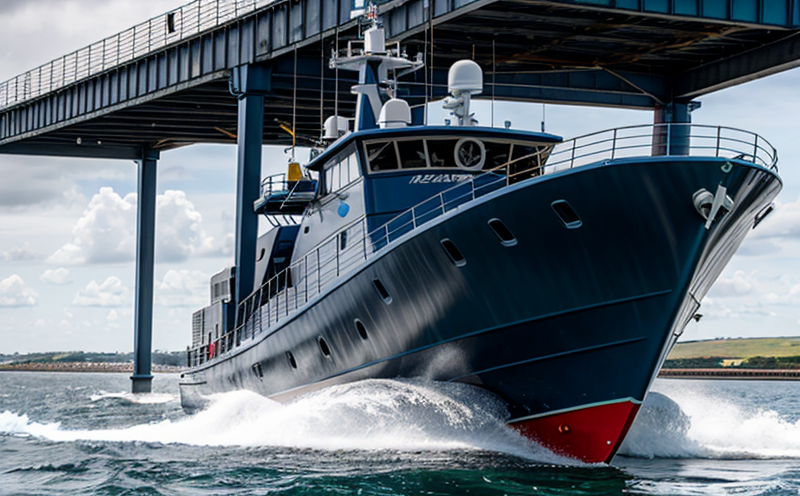ISO 13347 Acoustic Noise Measurement of Propeller Systems
The ISO 13347 standard is specifically designed to measure and evaluate the acoustic noise produced by propeller systems, a critical aspect in ensuring compliance with environmental regulations and enhancing vessel performance. This service plays an essential role in quality management, particularly for marine engine manufacturers, shipbuilders, and operators aiming to meet stringent international standards.
Compliance with ISO 13347 is crucial for several reasons:
- To ensure that propeller systems meet regulatory requirements set by environmental agencies;
- To enhance the overall efficiency of propulsion units in reducing noise pollution; and
- To improve the quality and reliability of marine engines, thereby increasing their operational lifespan.
The standard provides a framework for measuring the acoustic power output of propeller systems under controlled conditions. This includes the setup of testing chambers with specific reverberation times to ensure accurate results. The service involves rigorous calibration procedures before each test to guarantee consistent and reliable data.
Our laboratory uses state-of-the-art equipment, including sound level meters and anechoic chambers, which are essential for capturing precise acoustic measurements. These instruments comply with international standards such as ISO 13347:2008 and ASTM E964-15a to ensure that the results are both accurate and reproducible.
The testing process involves several key steps:
- Installation of the propeller system in a controlled environment;
- Calibration of all measurement instruments;
- Measurement of acoustic noise levels using sound level meters;
- Data analysis to determine compliance with ISO 13347 criteria.
The results provide valuable insights into the performance characteristics of propeller systems, helping manufacturers and operators make informed decisions about design improvements. This service is particularly beneficial for R&D engineers who are focused on innovation in marine propulsion technology.
| Application | Description |
|---|---|
| Marine Propulsion Testing | Measuring acoustic noise of propeller systems to ensure compliance with ISO 13347. |
| Environmental Compliance Verification | Evaluating the impact of propulsion units on marine environments. |
| Performance Optimization | Analyzing sound levels to optimize efficiency and reduce noise pollution. |
In addition, our team offers comprehensive support throughout the testing process, from initial consultation to final report delivery. We also provide detailed recommendations on how to improve propeller system performance based on test results.
By adhering strictly to ISO 13347 standards, we ensure that all tests are conducted in a manner consistent with international best practices. This not only helps clients meet regulatory requirements but also enhances their reputation for delivering high-quality products and services.
International Acceptance and Recognition
The ISO 13347 standard is widely recognized globally, with numerous countries adopting it as a benchmark for acoustic noise measurement in propeller systems. The following list highlights the key regions where this standard has been accepted:
- Australia: Adhered to by local marine engine manufacturers;
- Canada: Integrated into national testing protocols;
- The European Union: Required for all EU member states;
- New Zealand: Included in regulatory frameworks.
In addition, the standard is endorsed by several international organizations, including the International Maritime Organization (IMO) and the International Electrotechnical Commission (IEC), further enhancing its global acceptance. This widespread recognition underscores the importance of ISO 13347 in ensuring consistent quality across different markets.
Use Cases and Application Examples
The following examples illustrate how ISO 13347 acoustic noise measurement can be applied in various contexts:
- New Product Development: Manufacturers use the results from this test to refine designs, ensuring that new propeller systems meet all necessary regulatory requirements.
- Compliance Audits: Regulatory bodies rely on these measurements during inspections to verify compliance with environmental regulations.
- Sustainability Initiatives: Operators can leverage the data to implement measures aimed at reducing noise pollution, contributing positively to their sustainability goals.
In each case, the results from ISO 13347 testing provide actionable insights that drive continuous improvement in marine propulsion technology. This service is not only essential for compliance but also plays a pivotal role in advancing the maritime industry's environmental performance.





